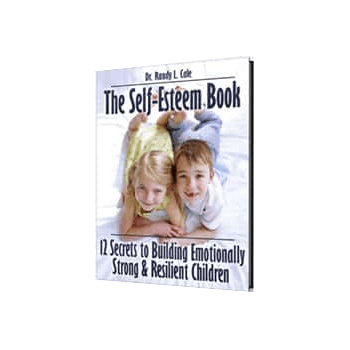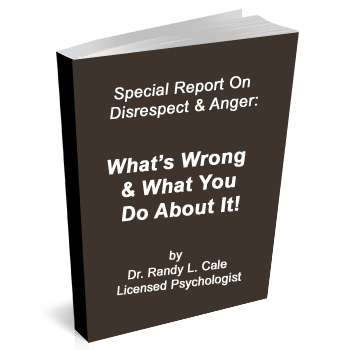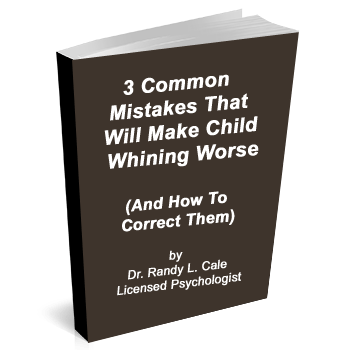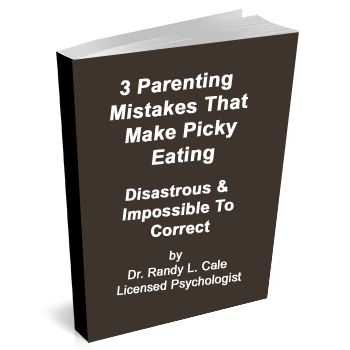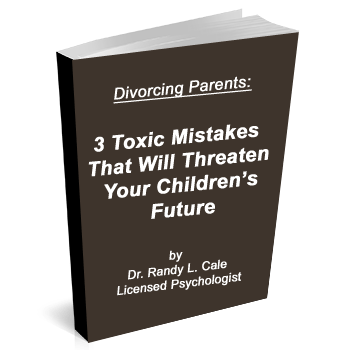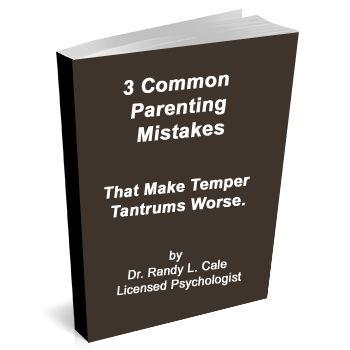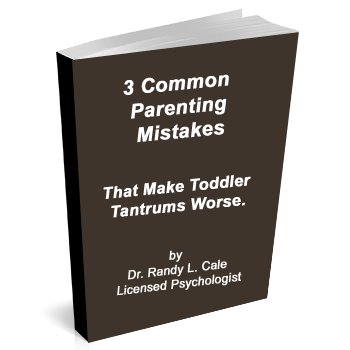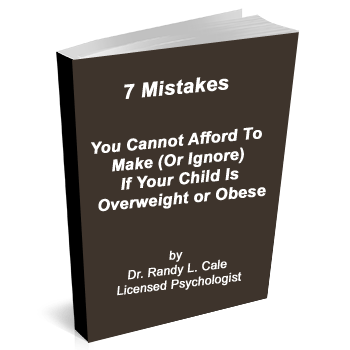Words Don’t Teach Limits (Consequences Do)
 One of the biggest mistakes we make in our efforts to develop healthy habits, both for ourselves and our children, is that we think that words help to modify or change persistent behavior patterns. When it comes to setting limits on children (e.g., stop playing and come to dinner, turn off the TV and get ready for bed or stop screaming in the house) we tend to over-value words and use way too many.
One of the biggest mistakes we make in our efforts to develop healthy habits, both for ourselves and our children, is that we think that words help to modify or change persistent behavior patterns. When it comes to setting limits on children (e.g., stop playing and come to dinner, turn off the TV and get ready for bed or stop screaming in the house) we tend to over-value words and use way too many.
After last week’s column, I received an email from Jenny, an at-home mom, who asked a great question: She wondered, “Well Dr. Cale if parent modeling is so important…how can I use modeling to get my kids to go to bed, or do their homework instead of watching TV?”
Fundamentally, this is a question about setting limits and it leads to principle four of Terrific Parenting.
Words DO NOT TEACH behavioral limits. (At least, not well and not with any degree of predictability.) Words are great for teaching algebra, giving someone directions, or discussing your feelings. Words are great for communication of all sorts of things.
 However, when it comes to changing behavior or even teaching healthy behavior patterns, words simply don’t work very well. When you want to teach your child to drop a temper tantrum, words are worthless. When you want to stop prodding, reminding, and yelling over and over about getting ready for bed, you see your words just keep getting ignored the older they get!
However, when it comes to changing behavior or even teaching healthy behavior patterns, words simply don’t work very well. When you want to teach your child to drop a temper tantrum, words are worthless. When you want to stop prodding, reminding, and yelling over and over about getting ready for bed, you see your words just keep getting ignored the older they get!
This idea about talking more to your children is wonderful. I strongly support more open communication. However, it is the wrong tool to use, if you are trying to create a predictable, easeful home environment where your children learn to manage routines with ease and responsibility.
If you want to test the truth of this, just try using more words to see if it changes your child’s patterns of behavior. Do they scream less if you use more words? Do they listen better if you talk more? Do they seem to take on more responsibility with another well-intentioned talk from Mom or Dad? Many of you have already tested this, and you instinctively feel this, but don’t know what to do instead.
So what does work?
The key is to understand how the brain works. My simple lesson today is very practical and will point you in the right direction. Consider this: How many times could you remind a toddler to stay away from a hot plate?
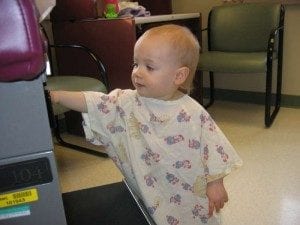 For many toddlers, it’s countless. This goes on for months and months. “Hot. That’s Hot Sweetheart. Don’t Touch.” You can repeat this daily…hundreds of times. No change in behavior. Every day, you keep reminding…
For many toddlers, it’s countless. This goes on for months and months. “Hot. That’s Hot Sweetheart. Don’t Touch.” You can repeat this daily…hundreds of times. No change in behavior. Every day, you keep reminding…
However, if one day, your toddler does sneak past you and touches the HOT plate, what happens? Suddenly, you notice…no need for reminders. The learning is complete. Rather than words, there is a natural (and painful) consequence that teaches this lesson. No more need for words. Your toddler is now telling you, “Mommy…it’s HOT!”
This is the difference between words and consequences…when teaching behavioral limits. Next week, I will follow up on this lesson, to explain more of the rules about when and how to use consequences.
For now, just remember: It’s about using the right tool, for the right lesson. When it’s setting limits, we find words are weak…and consequences are strong!
P.S: Have you signed up for your free special report? Remember: You get this special report for a limited time only. You also get state-of-the-art parenting guidance delivered free to your email box. Just one idea could change your child’s entire future.
Sign Up Now
Amazing Free Report Gives Parents
The Secret to Building Emotionally
Strong Children With Unstoppable
Self Confidence
* We will keep your information confidential and will never share your information with anyone. (We hate SPAM email too!)






